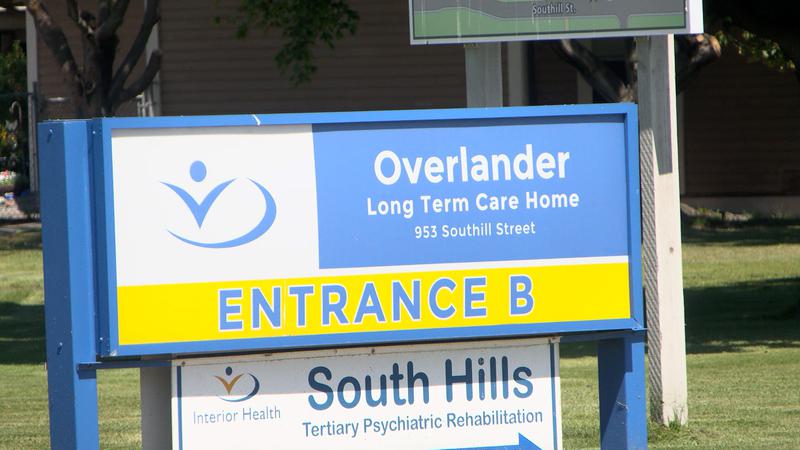The early morning light filtered through the blinds at Overlander Extended Care Hospital as Emily Thorne, 83, sipped her tea. It’s been her routine for three years now, ever since moving into the Kamloops facility after her Parkinson’s made living alone impossible. What Emily and 184 other residents didn’t know was that ceiling renovations on the third floor last month had disturbed something dangerous: asbestos.
“I thought the plastic sheeting and workers in masks were just normal renovation stuff,” Emily told me when I visited the facility last week. “Nobody said anything about asbestos until after it was all over.”
Interior Health Authority (IHA) confirmed yesterday that a “limited exposure incident” occurred when contractors improperly handled asbestos-containing materials during a routine maintenance project. The provincial health authority has been fined $8,500 by WorkSafeBC and issued a formal apology to residents, families, and staff.
“We failed to meet our standards for health and safety,” said Dr. Helena Morris, IHA’s Chief Medical Health Officer. “While testing indicates the exposure was minimal, we understand this creates significant anxiety for everyone involved, especially our vulnerable residents and dedicated staff.”
According to WorkSafeBC’s investigation report, contractors removed ceiling panels without proper containment procedures on June 12-13. The material, installed when the facility was built in 1982, contained chrysotile asbestos, commonly used in building materials before stricter regulations came into effect in the 1990s.
The exposure was discovered when a vigilant staff member noticed unusual dust and reported concerns to management. Work was immediately halted, and professional asbestos abatement specialists were brought in to conduct testing and remediation.
For James Lowell, whose mother lives on the affected floor, the incident represents a profound breach of trust. “Mom moved here because she needed specialized care. The very minimum we expect is basic safety,” he said, gazing at his mother as she dozed in her wheelchair. “They’re apologizing now, but where was the oversight before work began?”
Asbestos exposure becomes dangerous when microscopic fibers are released into the air and inhaled. According to Health Canada, these fibers can cause serious respiratory diseases including asbestosis, mesothelioma, and lung cancer. However, these conditions typically develop after prolonged exposure over many years.
Dr. Samantha Lee, a respiratory specialist at Royal Inland Hospital not affiliated with the facility, explained that while any asbestos exposure is concerning, the health risks from a brief, limited exposure are relatively low.
“The dose makes the poison,” Dr. Lee said. “From what’s been reported, this appears to be a short-duration, low-intensity exposure. For context, people who develop asbestos-related diseases typically had occupational exposure over decades.”
This explanation offers little comfort to the staff who worked through the renovation period. Maria Delgado, a personal support worker who has been at Overlander for eleven years, wasn’t scheduled on the affected floor but worries about her colleagues.
“We come to work expecting certain risks—back injuries from lifting, exposure to illness—but not this,” Delgado said. “Many of us are wondering what else might be lurking in these old buildings that we don’t know about.”
Interior Health has implemented a five-point response plan: free medical monitoring for all potentially exposed individuals, remediation and air quality testing, a comprehensive facility assessment, staff training on recognizing hazardous materials, and a review of contractor screening procedures.
The incident highlights broader concerns about aging healthcare infrastructure across British Columbia. According to the BC Care Providers Association, over 30% of residential care facilities in the province were built before 1990, when asbestos was commonly used in construction.
Terry Lake, former B.C. Health Minister and current CEO of the BC Care Providers Association, noted that while the province has invested in new facilities, many older buildings require significant upgrades.
“This situation at Overlander demonstrates why we need a provincial infrastructure strategy specifically for healthcare facilities,” Lake said. “These buildings house our most vulnerable citizens and the people who care for them.”
For families with loved ones at Overlander, the incident has created difficult decisions. Maryanne Williams, whose father has lived at the facility for four years, considered moving him but ultimately decided against it.
“Dad is 91 and has dementia. Moving him would be traumatic,” Williams explained. “We’re staying, but I’ll be watching much more closely now. And I’ve got air quality monitors in his room.”
Interior Health has scheduled three family information sessions and created a dedicated phone line for concerned relatives. They’ve also committed to quarterly updates on environmental testing at the facility.
As the sunlight shifted across Emily Thorne’s room during our conversation, she reflected on her situation with surprising equanimity. “At my age, you learn to take things as they come,” she said, adjusting her oxygen cannula. “But the young people working here—they deserve better. They still have their whole lives ahead of them.”
When I left Overlander, workers were installing new signage identifying asbestos-containing materials throughout the building—a small but visible reminder that sometimes the greatest dangers are the ones we cannot see until it’s too late.






